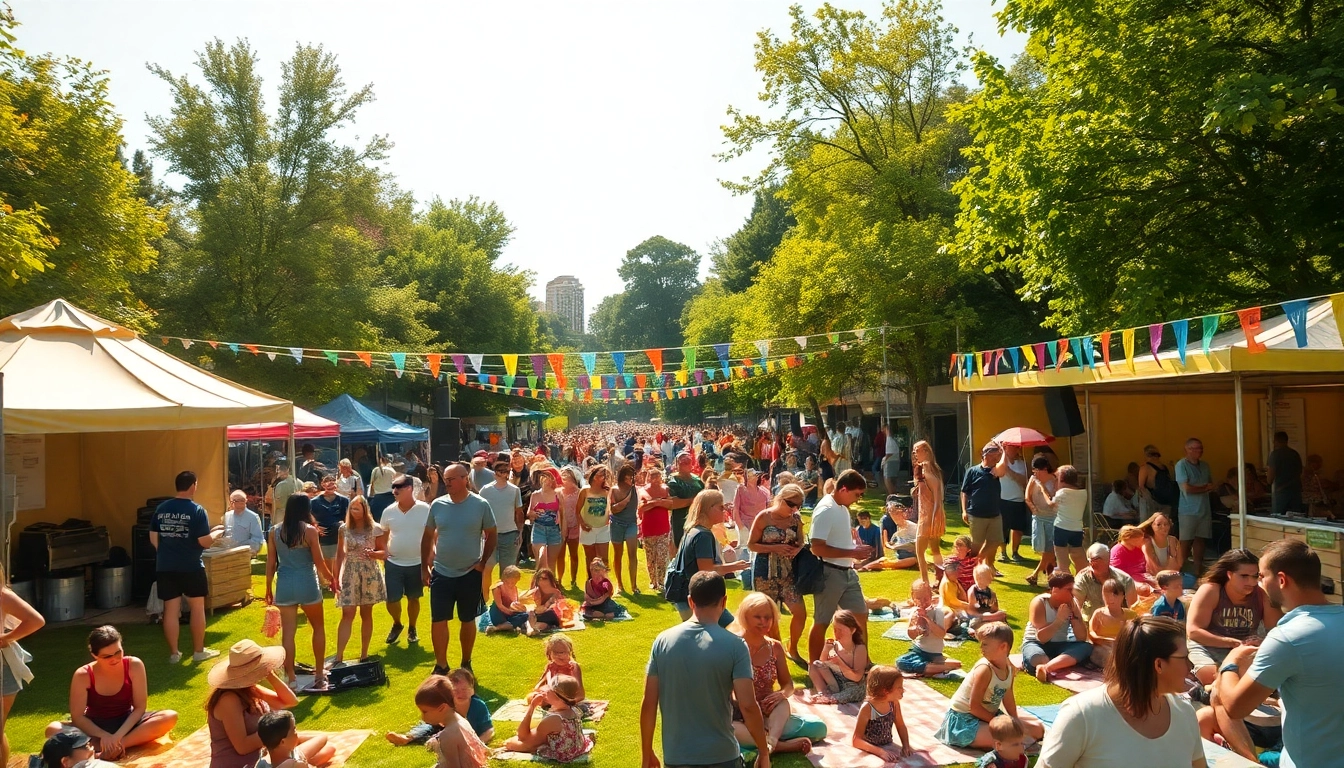The Importance of Outdoor Events
In a world increasingly characterized by digital connectivity, the value of outdoor events has grown exponentially. These gatherings not only provide opportunities for entertainment and recreation but also serve as vital avenues for community building and economic stimulation. The multifaceted impact of outdoor events extends far beyond their immediate enjoyment; they foster social unity, enhance local economies, and create lasting memories that resonate within communities.
Benefits for Community Engagement
Outdoor events play a pivotal role in promoting community engagement. By bringing people together in a shared space, they encourage social interaction among diverse groups, fostering a sense of belonging. Whether through local fairs, concerts, or sporting events, these gatherings break down barriers, allowing individuals to connect over shared interests, culture, and experiences. Volunteering opportunities at these events can further deepen community ties, as residents work together to create meaningful experiences.
Impact on Local Economy
The economic implications of outdoor events cannot be overstated. They provide a significant boost to local businesses, create jobs, and often result in increased tourism. For instance, when a fair comes to town, local hotels, restaurants, and shops often see a surge in revenue as visitors flock to the area. Not only do outdoor events generate immediate economic activity, but they also promote long-term investment in the area, enhancing its attractiveness to both businesses and residents.
Enhancing Social Connections
Social connections are essential for individual well-being, and outdoor events are a remarkable platform for cultivating these relationships. They cater to a wide spectrum of interests and demographics, from music lovers at festivals to sports enthusiasts at tournaments. This diversity ensures that outdoor events provide something for everyone, allowing individuals to form connections over shared passions and experiences, leading to stronger community networks.
Types of Outdoor Events
Outdoor events encompass a rich variety of activities, each designed to engage and entertain participants in different ways. Understanding the types of outdoor events can help organizers tailor experiences to specific audiences effectively.
Festivals and Fairs
Festivals and fairs are some of the most popular outdoor events, offering a vibrant mix of entertainment, food, and culture. These events often showcase local artisans, musicians, and culinary talent, providing a platform for cultural expression. They can celebrate seasonal themes, such as harvest festivals or holiday events, drawing large crowds and fostering a sense of tradition within the community.
Sports and Recreation
Sports events, such as marathons, soccer matches, or community relay races, not only promote fitness but also enhance community spirit. They encourage participants of all ages to engage in physical activities while fostering teamwork and camaraderie. Organizers can use these events to promote healthy lifestyles and support local charities, further strengthening their community ties.
Cultural and Art Exhibitions
Outdoor cultural festivals and art exhibitions provide a platform for creative expression, showcasing local talent and heritage. These events often include workshops, performances, and interactive displays, making art accessible to the general public. By engaging audiences creatively, they not only educate but also inspire future generations of artists and creatives.
Planning Successful Outdoor Events
Planning outdoor events involves a careful balance of logistics, creativity, and community needs. Successful events require meticulous attention to detail to ensure a safe, enjoyable experience for all involved.
Key Considerations Before Organizing
Before embarking on the planning process, several key considerations must be addressed. Understanding the target audience is paramount, as it influences everything from venue selection to programming. Furthermore, potential collaborations with local businesses or organizations can enhance the event’s reach and impact. Additionally, securing necessary permits and considering environmental factors, such as weather conditions and accessibility, are crucial to the event’s success.
Logistical Challenges and Solutions
Logistics can present significant challenges for outdoor events, including venue setup, crowd control, and safety. Developing a comprehensive plan that addresses these aspects is essential. For example, identifying multiple access points to the venue can alleviate congestion, while coordinating with local police and emergency services can enhance safety. Implementing technologies for crowd management, including ticketing systems and communication platforms, can streamline the event’s operations.
Effective Promotion Strategies
Effective promotion is the lifeblood of a successful outdoor event. Leveraging various channels, from social media to local press outlets, can help reach potential attendees. Engaging visually appealing promotional material and interactive content can capture attention. Early bird ticket offers, contest giveaways, and partnerships with local influencers can further enhance visibility and generate excitement leading up to the event.
Best Practices for Attendee Engagement
Engaging attendees during outdoor events is crucial for ensuring a rewarding experience that encourages repeat participation and positive word-of-mouth. Several strategies can enhance engagement and satisfaction among a diverse audience.
Interactive Activities and Workshops
Including interactive activities and workshops can greatly enhance attendee engagement. These hands-on experiences allow participants to immerse themselves in the event, making it more memorable. For example, craft stations at a festival or cooking demonstrations at a fair can draw attendees in and promote interaction, creating a lively and enjoyable atmosphere.
Leveraging Social Media for Engagement
In today’s digital age, social media plays an integral role in event engagement. Event organizers can use platforms like Instagram and Facebook to provide real-time updates, engage with attendees, and share captivating content. Encouraging attendees to share their experiences using event-specific hashtags can create a sense of community online, extending the reach of outdoor events even beyond their physical locations.
Feedback Collection for Future Events
Collecting feedback post-event is invaluable for continuous improvement. Surveys, both online and on-site, can provide insights into what attendees enjoyed or areas needing improvement. By actively soliciting feedback, organizers demonstrate a commitment to providing quality experiences, ensuring that future outdoor events are even more successful.
Evaluating Outdoor Events Success
Evaluating the success of outdoor events is essential for determining their impact and guiding future planning. Utilizing various metrics can provide a comprehensive picture of an event’s effectiveness and value.
Measuring Participation and Satisfaction
Tracking participation rates allows organizers to gauge interest and reach. Additionally, assessing attendee satisfaction through surveys can highlight areas of success and identify potential improvements. Utilizing metrics such as Net Promoter Score (NPS) can provide valuable insights into attendees’ likelihood of recommending the event to others.
Analyzing Economic Impact
Understanding the economic impact of outdoor events can provide insight into their significance within the community. Evaluating factors such as increased foot traffic to local businesses, hotel occupancy rates, and sales tax revenues can provide concrete data to stakeholders about the event’s contribution to the local economy.
Strategies for Continuous Improvement
Continuous improvement should be at the forefront of every event planning process. Analyzing past events and implementing changes based on attendee feedback can cultivate a culture of growth and excellence. Organizers can set goals for each subsequent event, whether it’s improving attendance rates, enhancing engagement strategies, or increasing sponsorship revenues, ensuring that each outdoor event surpasses the last.

